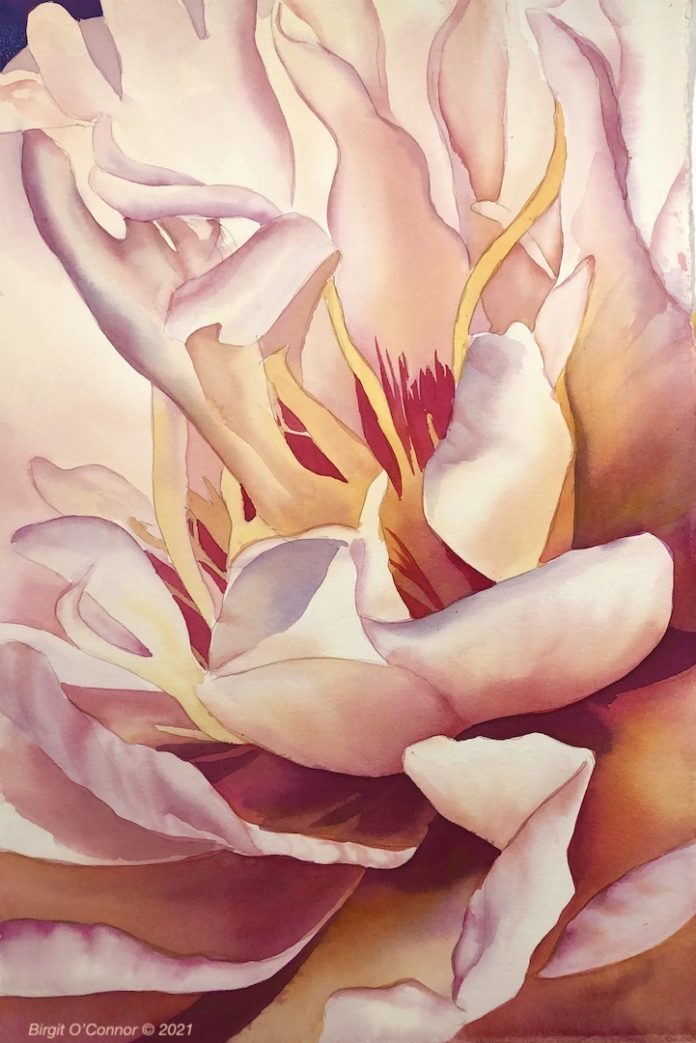Birgit O’Connor is on the faculty of Watercolor Live 2022, a virtual art conference held by Streamline Publishing. Register now to reserve your spot in this amazing event!
Learn what inspires watercolor artist Birgit O’Connor, as well as the most common mistake she sees beginners make, the first thing they should invest in, and more.
Q&A: Putting the Water Back Into Watercolor
Cherie Dawn Haas: I’ve been a fan of yours for years, and I remember the first time I saw one of your large-scale floral watercolor paintings. Can you tell us how your work has changed in the past decade?
Birgit O’Connor: Thank you so very much for your comment. Over the last decade much of my attention turned more towards teaching workshops for organizations, and my own online courses. When traveling for workshops I found my challenge was not only to convey the techniques that I used for my larger 60” x 120” paintings, but how to hold the impact of the design in a smaller format that would be more manageable for my students.
Over the last couple of years, I reduced my traveling schedule and expanded my online courses and virtual workshops; not only do they include Zoom meetings, but also a downloadable curriculum.
Having the ability to work online and with many more students has inspired me to be much more creative, explore new techniques, and even revisit older paintings that I completely lost interest in, and rework them, and bring new life and excitement into them.
Through my workshops, I also noticed that the quality of some of the materials I had always relied on over the years, became inconsistent and during that process I was forced to explore other options. I found that, in order to get the results I wanted, it required more effort on my part, and by simply altering some of the materials it made a huge difference to my style of painting. It became a bit looser and from there, I began expanding my subject matter.
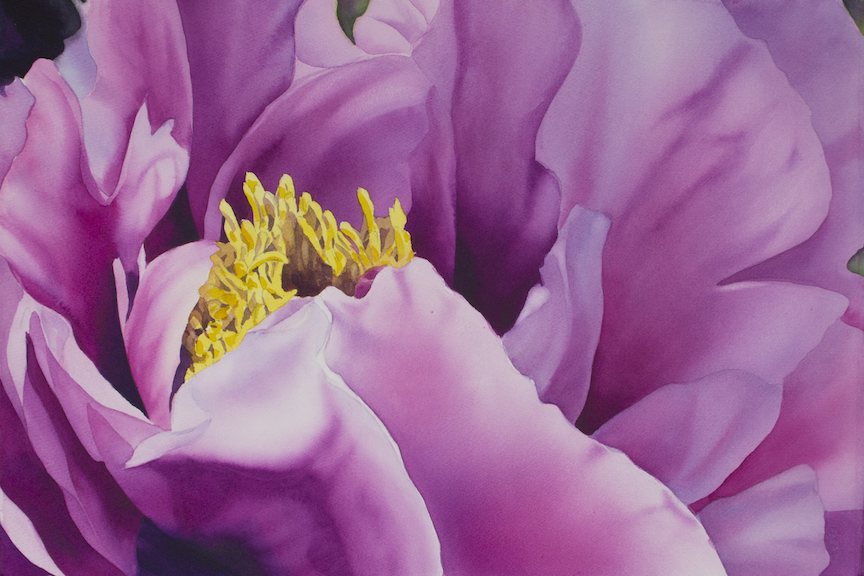
Haas: What draws you to paint with watercolor specifically?
O’Connor: There has always been something magical about the transparency of watercolor and how light passes through the stacked layers of color and reflects off of the paper surface. Personally, I like to put the water back into watercolor, meaning, allowing the colors to flow and transition, within the bubble of water on the surface.
Watercolor is not just a weak and pale medium, as it has been traditionally known for; it does have the ability to be soft and delicate, but it also can be bold and dramatic and convey a statement.
There is so much beauty in simple watercolor stroke color, or the wet-into wet applications and movement through gentle transitions, and when you allow yourself to let go of the control, you can use the so-called mistakes to your advantage and add an air of mystery to your paintings.
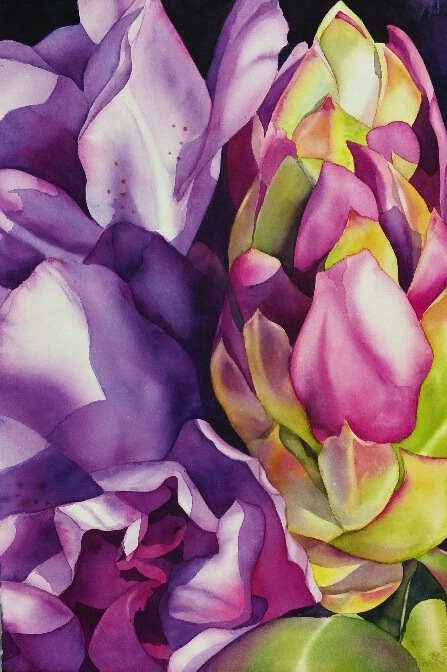
Haas: You paint florals as well as figurative art and landscapes; how is your approach different from subject to subject?
O’Connor: It really depends on the subject matter. For a dramatic floral, or general landscape paintings, I will use 300lb CP (cold press) paper with a harder sized surface, and in areas where I want the color to flow more, I will intentionally use a larger puddle of water, and to apply the color paint with sable /synthetic blend brushes and soften edges with a large natural brush.
If I wanted a looser style of painting for either landscapes, florals or figures and portraits, I might then consider a 140lb softer sized CP or even a HP (hot press) paper surface, and paint more with natural brushes, simply because instead of wanting the water on the surface to flow the color, I want more water on my brush to encourage blooms or even pigment lines along the edges of the strokes, something that I wouldn’t even consider for my florals.
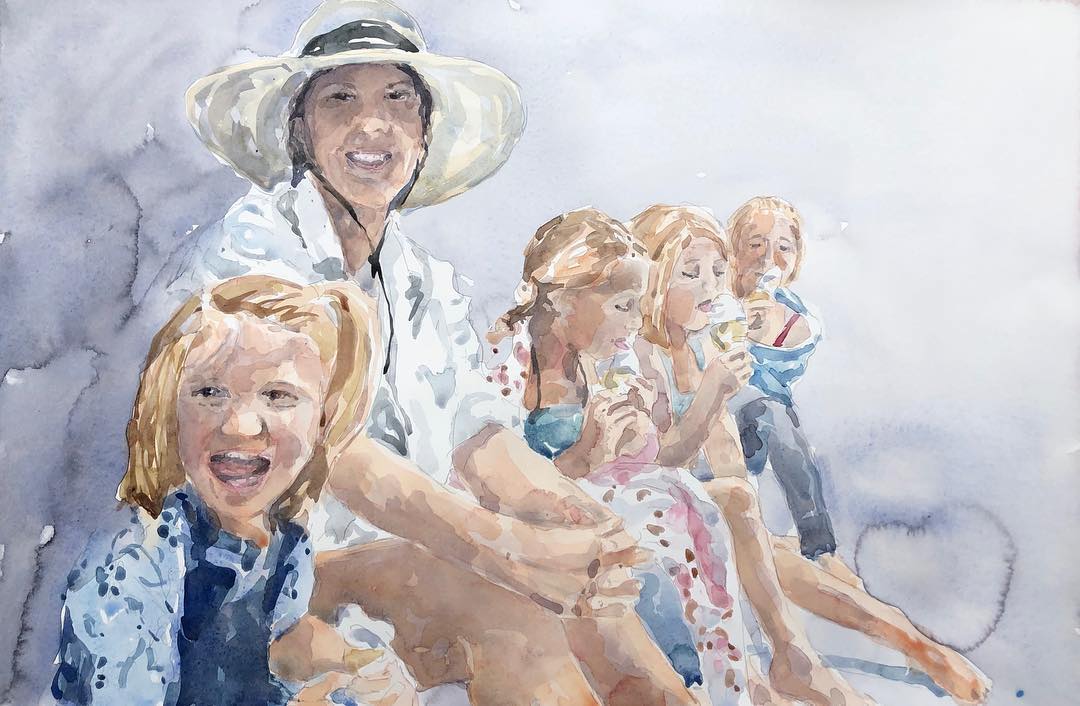
Haas: Looking at your career as an artist, what’s one thing you wish you knew when you first started?
O’Connor: You don’t need to be perfect. Think of every painting as an experiment, allow yourself to explore and embrace mistakes and breath.
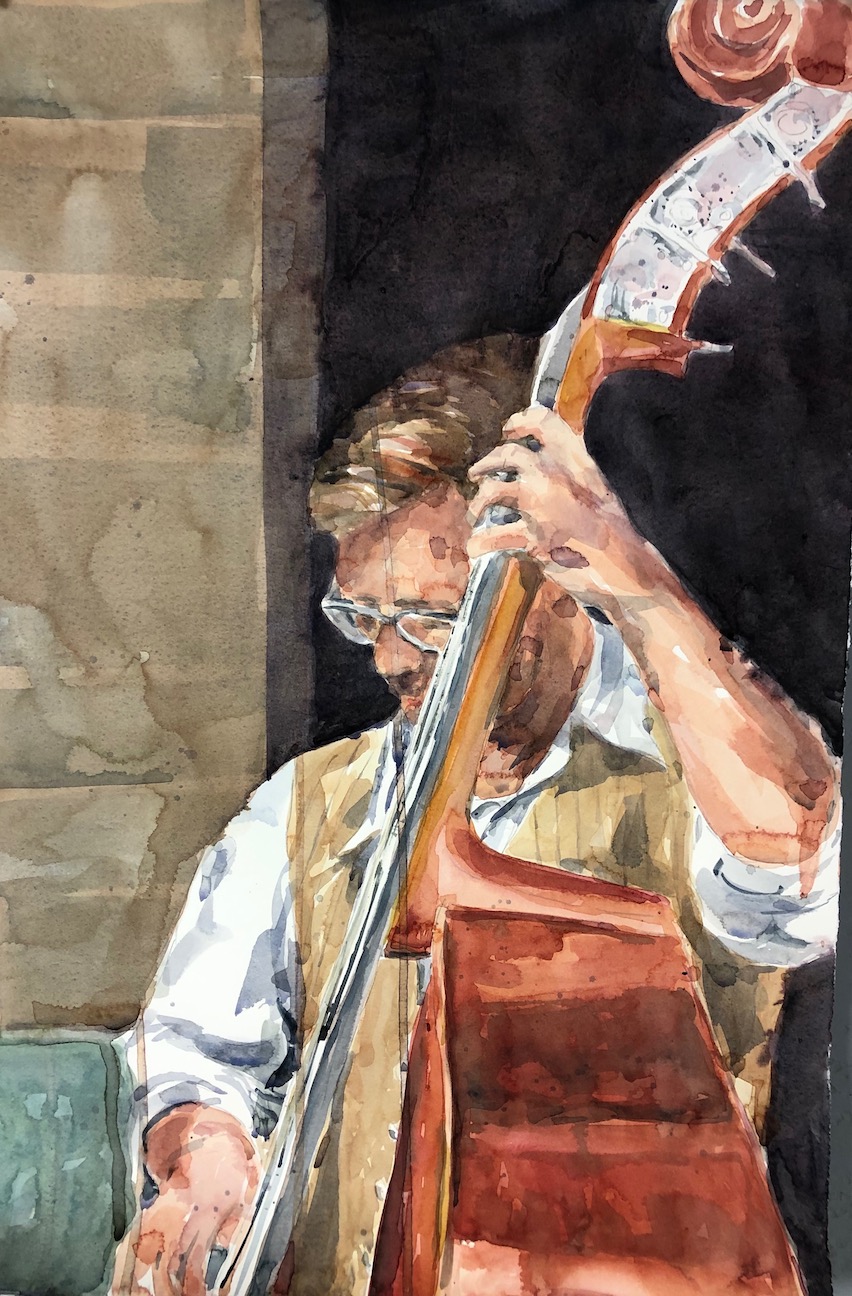
Haas: What are you most proud of as an artist?
O’Connor: I am most proud of the relationships that have formed over the years, and the internal journey that comes naturally from being an artist. Watercolor has brought me so many amazing surprises, and I am honored to have been able to share what I love with others, through my books, workshops, online courses – to help students to find their creative path and joy.
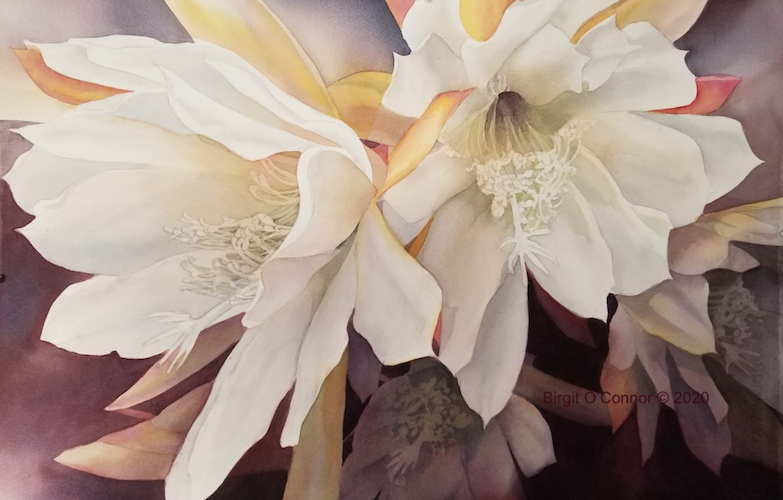
Haas: I imagine you’ve taught thousands of people how to paint with watercolor. What’s the most common mistake that you see beginners make?
O’Connor: The most common mistake students make is expecting to have great results with cheap paints, paper, and brushes, by using inferior products you can easily be frustrated. These materials are good for practicing your brushstrokes, or learning how much water to use in the palette when mixing color, or for quick, simple, fun paintings that don’t require much time investment.
Another problem many beginners have is using the brush like a pencil, instead of a brush. Or digging into the color in the well instead of bringing it from the well, to a puddle of water in the palette then mixing.
Often students wonder why they get that thick, hard line around their color; the problem is that they’re reapplying too much water, too soon, which can lift the previous color and push color out the edges, creating a hard line.
To avoid making mud, allow each layer to completely dry, before applying the next, and try not to mix more than two to three different colors at a time. Overall try to relax, experiment, and be willing to make mistakes, and have fun.
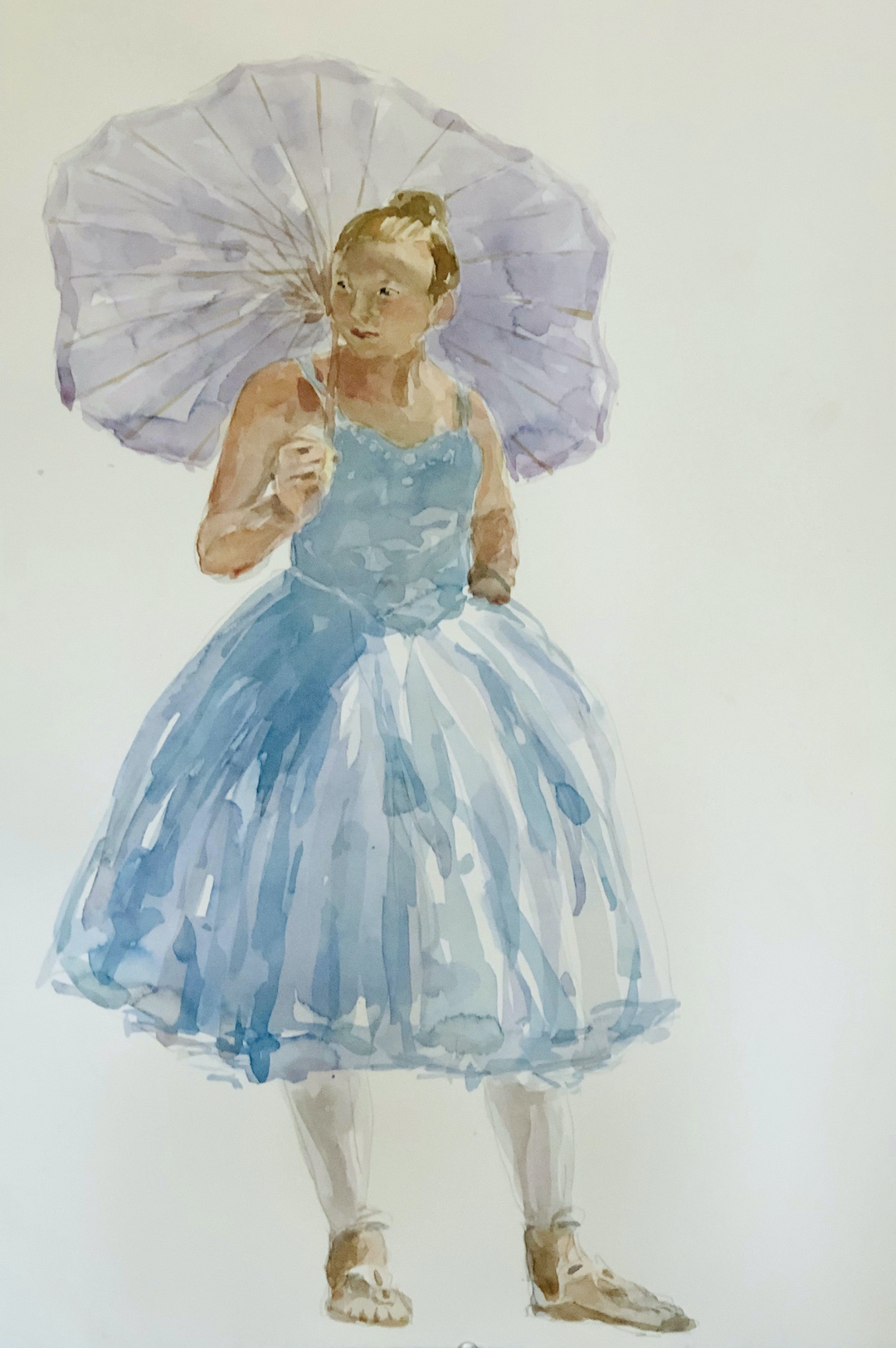
Haas: Is there one tried-and-true “rule” that you emphasize?
O’Connor: There are plenty of so-called rules, but I don’t really pay much attention to them. Be willing to explore, make mistakes, and experiment, because what works for one artist may not work for you. I guess if I had a rule it would be to allow the water on the surface to carry the color and let the painting paint itself and you just follow along. Look at what’s happening and work with it.
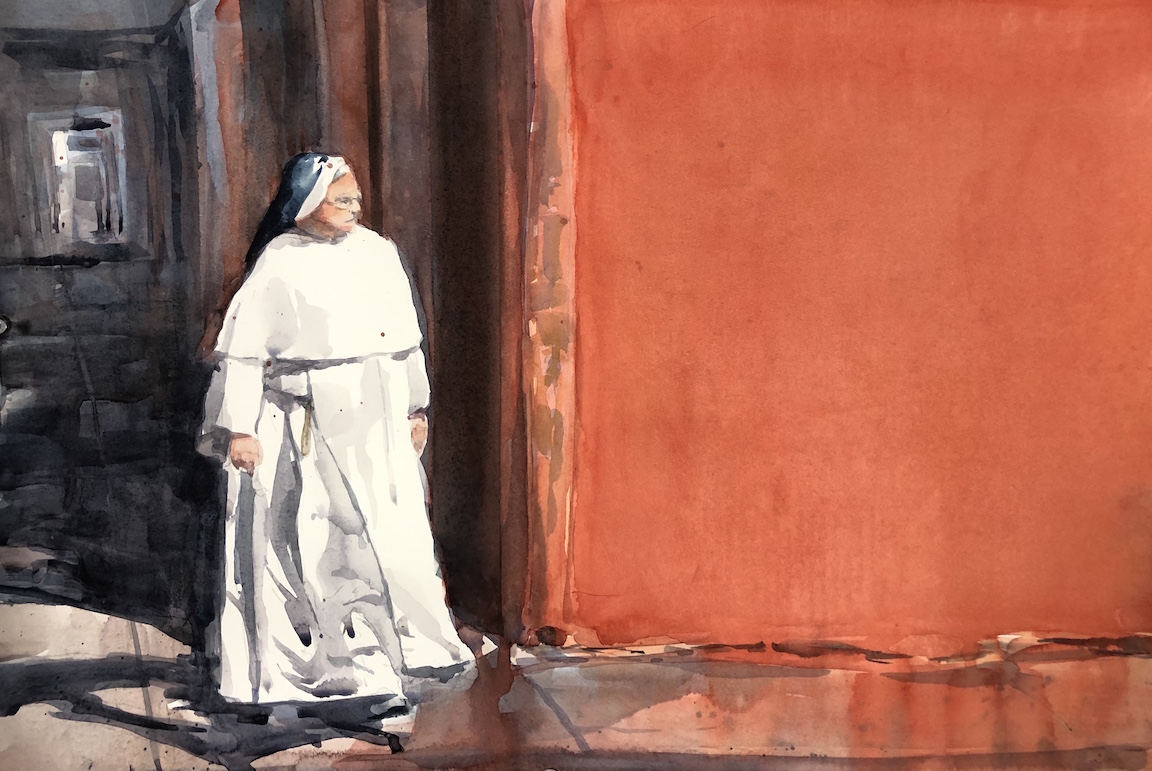
Haas: If someone is new to painting in watercolor, what’s the first thing they should invest in?
O’Connor: Decent brushes, and good paper, in blocks or sheets, most likely 140lb will be what is most affordable.
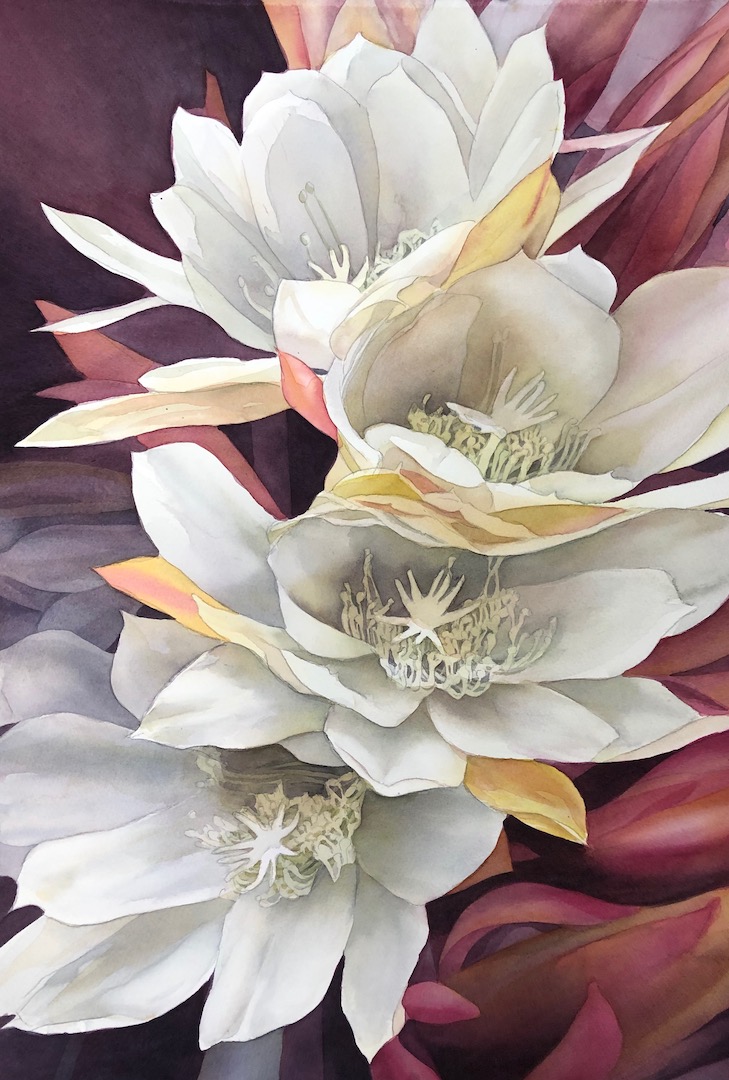
Haas: What do love to see in others’ work?
O’Connor: Confidence. I love it when an artist unapologetically applies their brushstrokes of color and is not afraid of the water.
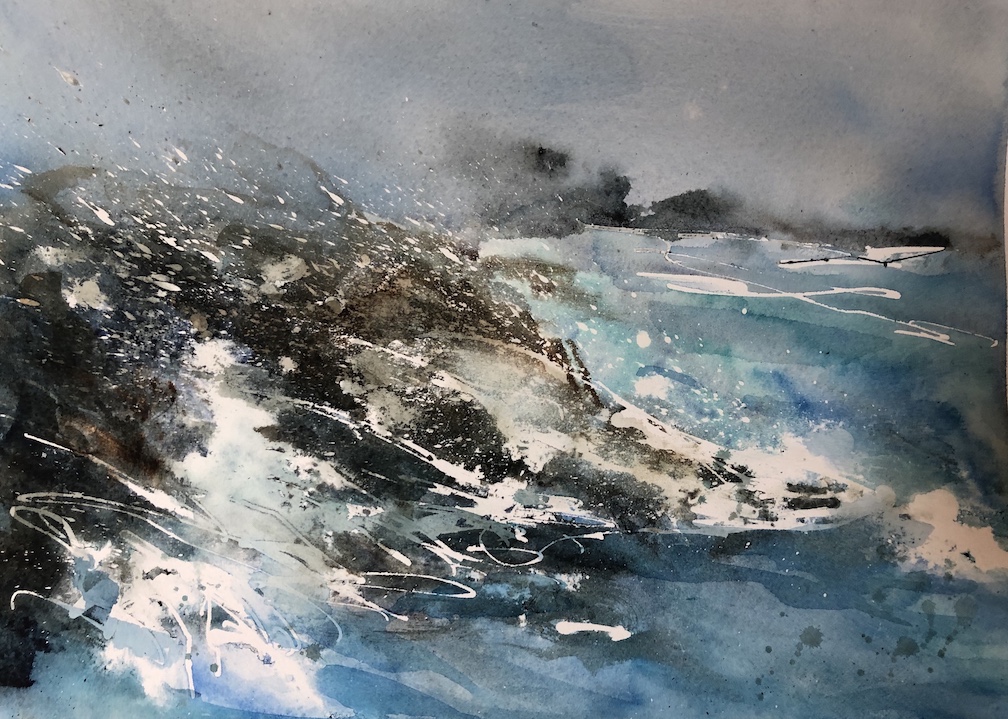
Haas: Just for fun! Finish this sentence: You know you’re an artist when…
O’Connor: When you are inspired by just about everything and can’t wait to start the next project, and don’t really worry about what others have to say about what your doing.
Connect with Birgit O’Connor:
Website | Instagram
Browse more articles on painting with watercolor at RealismToday.com.


